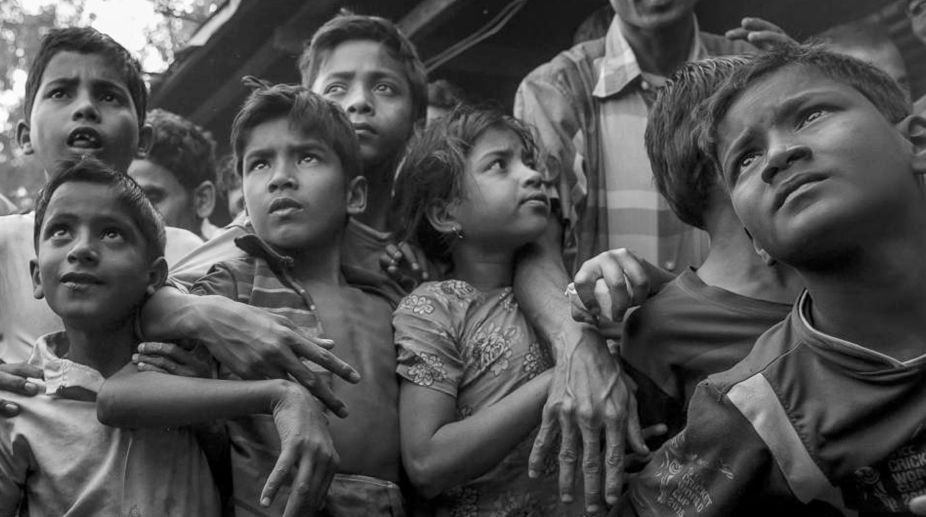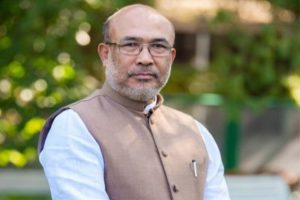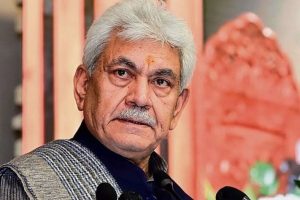We are guilty of many mistakes, but our worst crime is to abandon children. We thus neglect the fountain of life. Many of the things that we need can wait; the child cannot not least because his bones, his blood, and his senses are in the formative stage of development.
The recent signal on the health profile of Indian children, which was largely unnoticed, is cause for alarm. More than a fifth (21 per cent) of the children suffering from “wasting” (an insufficient weight-to-height ratio). The country slipped three places to 100 in the 2017 Global Hunger Index (GHI) of 119 countries. Incidentally, India fell 45 notches from its rank of 55 in 2014.
The dismal health of Indian women and children is primarily due to the lack of food security. It can be in place when all the people at all times have physical, economic and social access to safe, adequate and nutritious food that meets their dietary needs for a healthy and active life. Food security is measured along a continuum, from the most severe state of starvation to acute hunger, followed by chronic persistent hunger, and finally “hidden hunger”. Considerably less investment is required to maintain adequate nourishment for children than is required to treat undernourished children.
India has the world’s highest number of moderately and severely underweight children. Among those below five, one in three (35.7 per cent) is underweight, one in three (38.4 per cent) is stunted and one in five (21 per cent) is wasted. This is worse than many sub-Saharan countries. Overall, our country accounts for more than three out of every 10 stunted children globally. This is largely on account of a lack of nutritious food, poor care and feeding practices and inadequate water, sanitation, and health services.
Many children are born to anaemic and malnourished teenaged mothers. Indeed, 33.6 per cent of Indian women are chronically undernourished and 55 per cent are anaemic. In addition, feeding practices among such mothers are poor and the environment they live in with their children are appallingly unhygienic. However, the public health programmes generally overlook infants in the first two years of their lives, when malnutrition can afflict the child. Indeed, malnutrition in the first two years of life can cause permanent mental and physical damage.
Breast-milk helps to protect infants against infection. As it turns out, most children are given water and most spend their first few years subsisting on a diet that is poor in terms of protein and vitamin. Children cannot grow reasonably tall on such a restricted diet. Moreover, research in other countries has shown that supplementary nutrition given in the first two years of life can improve a child’s IQ by 10 per cent.
It is not merely the lack of nutrition that results in stunting; the environment plays a significant part as well. Common enteric infections, which are generally due to lack of hygiene or sanitation, can affect the system’s ability to absorb nutrients. Thus, even if the child has access to nutritious food, the body may not be able to absorb the nutrition. Also, diarrhoea among children in the poverty-stricken areas during the first two years of life has been linked to an eight cm reduction in height and a ten IQ point decrease if the child is between seven and nine. India’s programmes to feed children in school have multiplied over time, but by the pre-school age it is too late to prevent stunting and damage to the intellect that occur by the age of 2. India runs the largest child feeding programme in the world, but it is inadequately designed, and has made an innocuous dent among sick children.
According to the development economist, Jean Dreze, the most serious nutrition challenge in India is to reach out to children under three years of age ~ “It is well known that if a child is undernourished by age three, it is very difficult to repair the damage after that.” The cost of failure ~ both in human and economic terms ~ are huge. Pervasive long-term malnutrition erodes the foundations of the economy by destroying the potential of millions of infants. Children stunted on account of malnutrition run the risk of earning 20 per cent less as adults. Many of them may even turn out to be mentally challenged.
A package of basic measures ~ including programmes to encourage mothers to exclusively breastfeed their children for up to six months, fortifying basic foods with essential minerals and vitamins, and increased cash transfers with payments targeted at the poorest families ~ may yet turn the tide. India boasts two robust national programmes to tackle malnutrition ~ the Integrated Child Development Service (ICDS) and the National Health Mission ~ but these do not reach enough people. The delivery system is also inadequate and plagued by inefficiency and corruption. Some analysts estimate that 40 per cent of the subsidised food never reaches the intended recipients
Child mortality in India generally occurs from “treatable diseases”, such as pneumonia, diarrhoea, malaria and birth complications. The child may eventually die of a disease, but that affliction becomes lethal if he/she is malnourished and unable to resist the ailment. The staff of ICDS attributes part of the blame for malnutrition on parents who neglect their children. Grinding poverty compels most women to leave their babies at home and work in the fields during the agricultural season.
A critical factor behind malnutrition is the failure of malnourished adults to choose nutritious food. One survey by the economists Duflo and Banerjee has found that, overall, the poor in developing countries had enough money to increase their food spending by as much as 30 per cent, but this money was spent on alcohol, tobacco, and festivals. Progress is still slow and the political will patchy, but there are signs that a new approach is being evolved.
India’s official think-tank, NITI Aayog, has drafted a National Nutrition Strategy that aims at eradicating malnutrition from the country by 2030. With this objective in view it has set certain targets ~ 1) To reduce under nutrition in children (0-3 years) by 3 per cent per annum until 2022; 2)To reduce the prevalence of anaemia among young children, adolescent girls and women in the reproductive age group (15-49 years) by one-third of the NFHS 4 levels by 2022.
Some other recommendations are for programmes to promote breastfeeding for the first six months after birth, universal access to infant and child-care including ICDS and crèches, provision to provide bi-annual critical nutrient supplements and programmes aimed at de-worming children. As regards, maternal care, the strategy proposes that the government provide nutritional support ~ in particular, adequate consumption of iodised salt ~ to mothers during pregnancy and lactation.
In order to consolidate its efforts towards tackling the challenge of malnutrition, the government has approved the National Nutrition Mission (NNM). With a budget of Rs 9046 crore over a period of three years, the mission is expected to benefit 10 crore people. Through this programme, the government seeks to reduce stunting, malnutrition and low birthweight by 2 per cent every year.
However, these policies can only reap the desired benefits
The writer is the author of Village Diary of a Heretic Banker. He has spent











